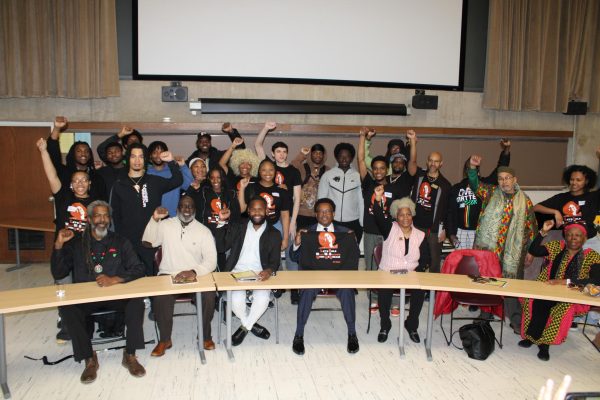Student success programs combat enrollment decline
Declining enrollment in higher education is a common theme across the country. SUNY Buffalo State is no exception.
The four-year graduation rate at Buffalo State is only 23 percent. Much of that has to do with how many people enroll but never actually intend to finish, rather plan to transfer to a different school.
“There are a good number [of students] that come to Buffalo State because they want to go to another school,” Daniel Velez said, head of the Student Success Unit. “So we are working harder on keeping them here.”
Velez said another reason why students do not finish their undergrad at Buffalo State is because they have different expectations of the school and of the programs offered.
Initiatives like the NIA mentor program are being implemented to keep students here. The NIA mentor program is a nurturing and supportive program that matches mentees with student and faculty mentors to help them with all aspects of college life.
The program has seen an increase in the number of students participating than in previous years. This year seventy more students are involved, about half of those students are mentees and the rest mentors.
“The mentors may not know this but through their initiative with mentoring students, they are also staying. We know there is a high correlation between engagement and success,” Velez said. “Students who are engaged with the campus through their time and students doing well are most likely to stay.”
Velez also said there needs to be a dual component of engagement outside the classroom and success academically. For the success academically student success partnering with faculty to help support students in the classroom. They will be working to achieve that goal through our Map-Works initiative.
MAP-Works is a survey-based software program that helps keep tabs on freshmen students academically and otherwise. Professors, residence-life employees and advisers will be able to see a comprehensive
profile of students that outlines what their expectations are and how they are doing.
Eileen Merberg, interim director of student life, says that she thinks that as this program becomes more successful, it will have a ripple effect and bring in more students.
The MAP-Works program has an 80 percent participation rate from new students.
Very soon, Merberg hopes to have MAP-Works integrated into Blackboard. That way, it will be routinely part of a professor’s interaction with students. It will create a full circle experience for students.
Making sure a new student’s experience is satisfactory is very important for student success. If student goals are identified, then faculty and staff can help students actualize their goals.
“We want to make sure their experience is a good one, that they are not only engaging on campus, but that they are engaging in a way that they enjoy, and that they persist and graduate, ” Velez said.
The possibility exists for enrollment to continue declining. According to Velez, Interim President Howard Cohen has challenged the College Planning Council to have conversations about what a continued decline could mean for Buffalo State as an institution.
“That process will involve a discussion with students, faculty and staff throughout the year. That’s a question we all have to engage with,” Velez said.
Merberg explained that to get enrollment up, the school will have to determine what the demand is from prospective students.
Email: [email protected]






